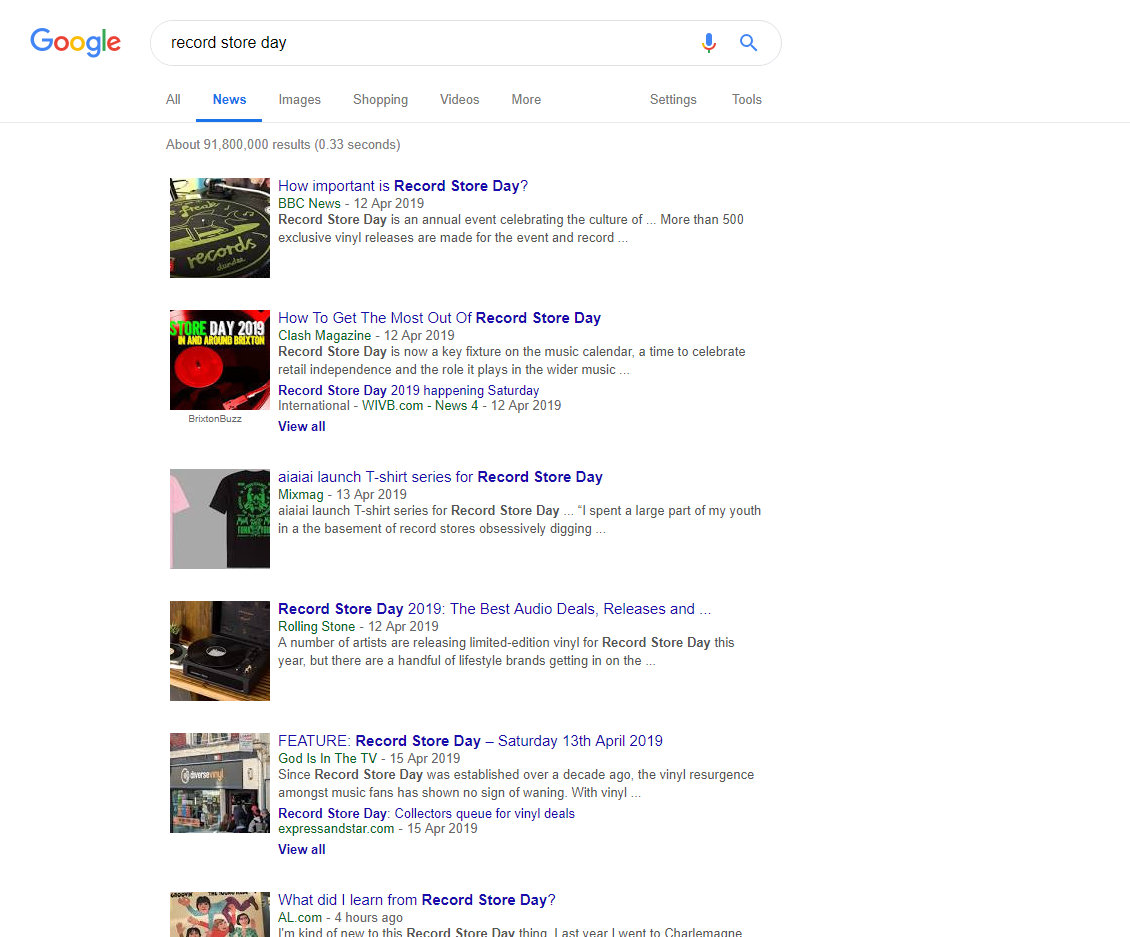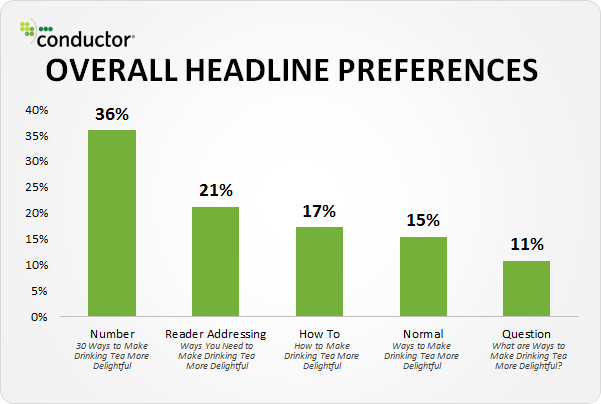9 ways to make content titles people will want to click
First impressions are massively important when you’re writing content for business. Someone has searched the topic you’ve wrote about, and if you’re lucky (or skilled!) it’ll be on the Google results- from there, the reader can choose to click your link or scroll right past if there’s something more fitting. This is why your title needs to be eye-catching, interesting and, most importantly, relevant. Here’s how you can do it:
1. Focus on pain points, and stay on topic
People click on posts to either solve a problem they have or to teach them something they didn’t already know. If you’re writing a guide or other blog post, the key is to find the people that are looking to find you.
You can do this by identifying who will be reading your article once it’s finished. You should aim to address all the questions a reader may have in the post, then you can title it with the issue they’ve ran into. Something like “What’s the best way to make scrambled eggs?” would be perfect if you go into detail on why that is the case.
It’s also good practice to start with a headline and create the content around it in the future, as it lets you answer questions that you already know people would like the answer for. On top of this, it keeps you talking about the subject you’re there to talk about.
Effective content has a topic, which is constantly being touched upon and referred back to. It’s easy to get excited and go off on tangents, and that’s a big thing that drags down content quality.
You can plan for this by writing a rough structure to follow after thinking of your headline. Something along the lines of:
“Why SEO is important for profit”
- Intro
- It’s free- big profit
- Big traffic- big profit
- Find out why visitors aren’t visiting your store- improve profit
- Outro
If each point you make ties back to your subject, your content will be relevant, helpful, and highly sought-after for years to come.
2. Write around your titles
Like we’ve explained, headlines need to answer a question, solve a problem, teach a subject or interest the reader in another way. Since this is a quite rigid formula that needs to be followed to create a successful post, it’s better to start with the question and write out the content as an answer.
When you’re planning the article, it’s best to have multiple headlines, where you can work out the audience you’re going to aim for. I’d personally aim for 3-5 titles at the beginning, and shorten it as I’m researching. When you’re doing research, you can see what articles are at the top of the Google results to give you a better idea of what angle to go with on your chosen topic.
Once you’re finished with the article, you can look back on other successful ones and read back over your content- make sure it’s interesting but not misleading. Keep your target audience in mind, keep the post’s purpose in mind, and keep your competition in mind.
Let’s just say, hypothetically, I’d like to talk about Record Store Day. A quick Google search pulls up these results:

From this, I can see people are interested about the history of the event, and what is currently available this year. I wrote up a list of potential headlines using questions people would want the answer to:
“Record Store Day: what to look out for this year”
“How to prepare for Record Store Day”
“The best things you can get this year on Record Store Day”
“Record Store Day: What’s dropping this year?”
“Record Store Day: 12 amazing releases to look out for”
“10 Record Store Day 2019 deals you don’t want to miss”
With this list, you can alter your content as you go, then choose the most fitting one at the end.
3. Use people or groups in your titles
Humans are social creatures. That’s why we eat up anything a celebrity advertises, and we have to check customer reviews before buying a product.
BrightLocal reported in a 2017 survey that 57% of customers will only use a business if it is rated 4+ stars on a review site. This shows how significant the opinions of others are to buyers. Copywriters know this, and manipulate this simple concept to get people onside before they even realise it.
“Where to buy the jeans Travis Scott wore at Coachella”
“Why photographers love the Nikon D500”
“10 SEO Tips marketers don’t want you to know”
This drums up interest because it creates a subconscious thought in the potential reader’s mind, “if other people love this, maybe I should look into it.”
If you’ve spoken to a celebrity that you can name in your headline, that’s amazing. People will be drawn in by the name alone, but if not, even just a vague term like “PPC experts” or “9/10 dentists” will suffice.
4. Give them a threat
Not like that. Threat headlines are slightly less malicious than “read this or else,” they’re more of a “something bad might happen if you don’t read this.” Okay, that also sounds bad. I’ll use some examples to help you understand:
“The extensive guide to not being scammed in stores”
“How safe is your social media from hackers?
“20 lifestyle choices you can make to avoid a heart attack”
They grab the reader and make them think “I should definitely read this”, generating clicks for you, and as long as you’re fulfilling your promise, you’re doing nothing wrong.
5. Be clear and honest
People love getting exactly what they expected when they clicked the article, so it’s best not to falsely advertise to readers. Be concise, accurate and explain what’s going to be in the article, and the people that do click will be more likely to read the full thing and leave happy.
“15 Social media tips to grow your business”
“How is the Simpsons still going?”
“iPhone X: What’s new?”
These are all a nice length, read as a coherent sentence, and are all pretty self-explanatory.
“Best pizza in the world, how to make, where to get ingredients”
Not so much.
6. Brand personality
Your brand’s tone of voice matters on social media, and it also matters in your blog. Do you want to be seen as entertaining? Funny? Informative? Your headline is the first impression readers will get, and often they would’ve already decided on whether they like you as a brand before they’ve finished the article.
SproutSocial reported here that 86% of consumers want brands to be honest, 83% want friendly, 72% want funny and 43% want trendy. Which niche do you want to fit into? A humorous funeral planner probably won’t go down well, but within the realms of reason, you can really attract people.
It’s important to match the tone of voice in your headlines with the tone of voice in your articles, because having a specific tone in a title will bring in a specific reader. You can test the waters on your current blog to see how people react, humour, controversy and niceness can change who reads your articles hugely.
7. Make a guide
People are suckers for guides. Adding “how to”, “the ultimate guide to” or something similar makes people want to click it a lot more. Teaching someone everything they need to know on a subject is appealing because it’s convenient for the reader.
“How to paint like Picasso in 6 steps”
“The ultimate guide to becoming a billionaire”
“The meaning of life for beginners”
I’m willing to bet money none of these examples would yield anything fruitful, but that won’t stop me from clicking on them.
8. Use numbers
When you use a number in a headline, you immediately hook the reader’s interest. The psychology behind this is that you’re fulfilling a very specific promise to the reader, by having the exact amount of points you mentioned in the title.
Example: If you’re going to write about how to get better at Monopoly, headline it with “7 Ways to improve at Monopoly” because you’ll get 12-25% more traffic than you would by saying “How to get better at Monopoly”.
Conductor did a survey a few years ago where they asked readers what their headline preferences were, and the results were as follows:

Numbers absolutely killed it. People just love when things are structured in easy-to-digest ways, and you can and should get in on it.
9. Don’t try and cheat the system
Search and SEO are always changing, being exploited, patched and exploited again. Google are, however, closer than ever to cracking the code. They can now judge the intent behind searches, they can see what context the searches are in, and they can almost think like people.
This means writers need to stop writing for Google by cramming in keywords, and start writing for people again- the way it should be.
Put the readers first and create a title around the questions they’re likely to ask- and make sure to write like a human! Something like “How to dress better” will solve the reader’s problem completely, and may even be an exact match for what they searched in the first place.
Conclusion
There isn’t a headline you can write that everyone in the world will want to click on. What’s clickable changes from business to business, so trial and error is the best way to improve your own headlines. These steps are all useful, and will make click numbers rise, but there’s a vast number of massively successful and effective blog posts that did things differently. See what works for you!
Would you rather hire someone to think about all this?
SEO and Content Marketing can be the perfect start to any top of the funnel strategy. If you’d like posts like this for your business, get in touch with our team at https://www.tribeminer.co.uk/contactus-2/

